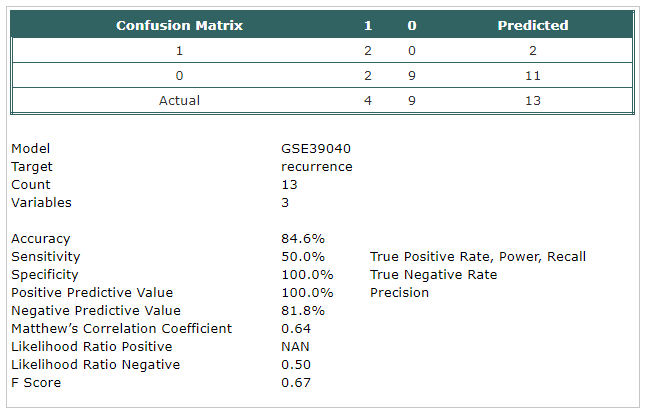GSE39040
|
| What
We Learned |
- Although microRNAs (miRNAs) are implicated in osteosarcoma biology and
chemoresponse, miRNA prognostic models are still needed, particularly because prognosis is imperfectly correlated with
chemoresponse.
|
- Formalin-fixed, paraffin-embedded tissue is a necessary resource for biomarker studies in this malignancy with
limited frozen tissue availability.
|
- Several miRNA-based models with as few as five miRNAs were prognostic independently of pathologically
assessed chemoresponse (median recurrence-free survival: 59 months versus not-yet-reached; adjusted hazards
ratio = 2.90; P = 0.036).
- The independent dataset supported the reproducibility of recurrence and survival findings.
|
- The prognostic value of the profile was independent of confounding by known prognostic variables, including
chemoresponse, tumor location and metastasis at diagnosis.
|
- Model performance improved when chemoresponse
was added as a covariate (median recurrence-free survival: 59 months versus not-yet-reached; hazard ratio = 3.91;
P = 0.002).
|
- Most prognostic miRNAs were located at 14q32 - a locus already linked to osteosarcoma - and their
gene targets display deregulation patterns associated with outcome. We also identified miRNA profiles predictive
of chemoresponse (75% to 80% accuracy), which did not overlap with prognostic profiles.
|
|
| What
We Did |
- A classification model has been built using Trainset.
The selected probes were:
- hsa-mir-342-3p
- hsa-mir-206
- hsa-mir-382
|
- The model has been tested using Testset.
|
 |
|

